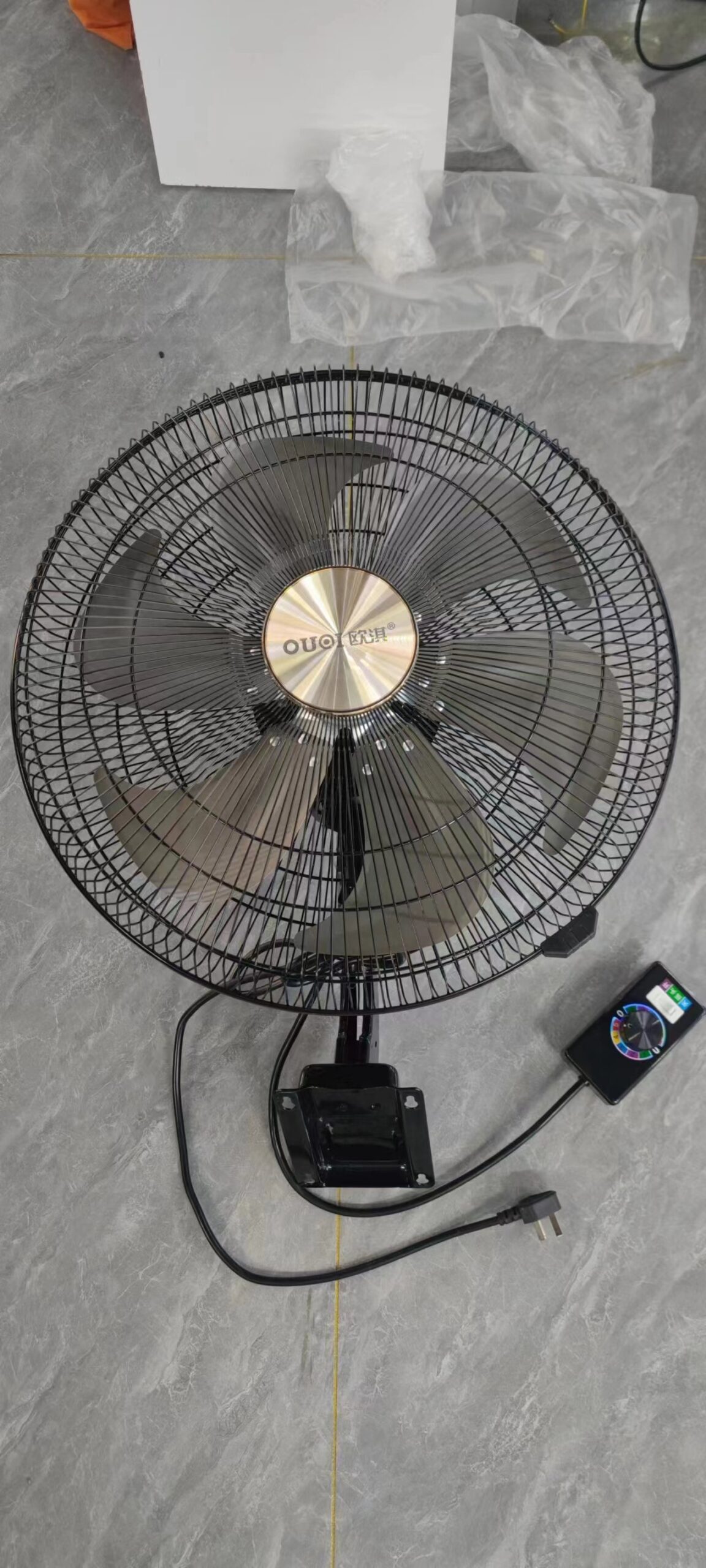A wall fan is a type of electric fan that is designed to be mounted on a wall, offering a space – saving and efficient cooling solution for various indoor environments.
1. Design and Structure
- Mounting Mechanism
- Wall fans come with a dedicated mounting bracket. This bracket is typically made of sturdy metal or durable plastic. It is designed to be securely attached to the wall using screws or wall anchors. The bracket allows for easy installation and provides a stable base for the fan unit. Some brackets are adjustable, enabling the fan to be tilted up or down, or even swiveled horizontally in some cases. This adjustability feature allows users to direct the airflow precisely where it is needed, whether it’s to cool a specific area of a room, like a workbench in a garage or a reading nook in a living room.
- Fan Unit
- The fan unit itself consists of several key components. At the heart of it is the electric motor. This motor is designed to be compact yet powerful enough to drive the fan blades. The motor is connected to a set of fan blades, which are usually made of lightweight yet durable materials such as plastic or metal. The number of blades can vary, with common models having three, four, or five blades. The blades are shaped and pitched in a way that when the motor rotates them, they create a strong airflow. The fan unit is often enclosed in a protective grille. This grille serves two main purposes: it prevents users from accidentally touching the spinning blades, ensuring safety, and it also helps to direct the airflow in a more controlled manner.
2. Function and Performance
- Air Circulation
- Wall fans are highly effective at promoting air circulation within a room. When the fan is turned on, the spinning blades push air forward, creating a draft. This draft helps to move the stagnant air in the room, making the overall environment feel more comfortable. In hot weather, the moving air can enhance the evaporation of sweat from the skin, providing a cooling effect similar to a natural breeze. In addition to cooling, improved air circulation can also help in evenly distributing heated air in colder months if the room has a heating source, such as a radiator or a space heater.
- Speed Settings
- Most wall fans come with multiple speed settings, usually ranging from low to high. These speed settings allow users to adjust the intensity of the airflow according to their needs. For example, in a quiet office or a bedroom where a gentle breeze is sufficient, the low – speed setting can be used. This setting provides a soft, unobtrusive airflow. On the other hand, in a more active environment like a gym or a workshop, where a stronger cooling effect is required, the high – speed setting can be engaged to produce a more powerful blast of air.
3. Applications
- Residential Use
- In homes, wall fans are commonly installed in bedrooms, living rooms, kitchens, and even bathrooms. In bedrooms, they can provide a cooling effect during sleep, especially in areas where air – conditioning may not be available or necessary. In living rooms, they can enhance the comfort of family gatherings or while watching TV. In kitchens, they can help to dissipate cooking heat and odors. In bathrooms, they can aid in ventilation, reducing humidity and preventing the growth of mold and mildew.
- Commercial and Industrial Settings
- Wall fans are also widely used in commercial and industrial environments. In small offices, they can offer a cost – effective cooling solution for individual workspaces. In restaurants, they can keep customers and staff comfortable, especially in areas where the air – conditioning system may not be sufficient. In industrial settings such as warehouses or workshops, wall fans can help to improve air quality by circulating air and reducing the build – up of dust and fumes. They can also provide a cooling effect for workers in areas with high heat – generating equipment.









